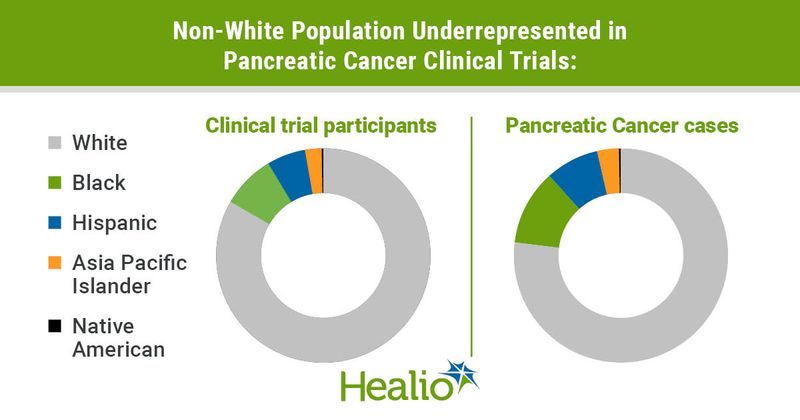Pancreatic cancer trials fall short on diversity
Although patients in underrepresented groups present with worse outcomes than white patients, pancreatic cancer trials fail to represent non-white patients, according to a presentation at Digestive Diseases Week.
“We know that recently there has been a heightened awareness of racial and ethnic disparities throughout our society. So, it really came as no surprise that these disparities are also present within scientific research and clinical trials. Our team wanted to know just how prevalent these disparities are within pancreatic cancer clinical trials,” Kelly Herremans, MD, surgical research fellow at the University of Florida College of Medicine, Gainesville, said during a press conference prior to DDW. “We focused on this particular disease because certain racial and ethnic minorities such as Black Americans get pancreatic cancer more often, are diagnosed at younger ages and die sooner.”

In looking at 207 clinical trials in the United States, the researchers saw that minorities were underrepresented but also saw a lack of data collection for race and ethnicity. Just 49.3% of studies included race in their data while just 34.7% reported ethnicity. In contrast, 99% reported on sex.
“Overall, there has been a positive trend in reporting, but these data illustrate that more than half of clinical trials are not reporting race and 65% are not reporting ethnicity,” Herremans said.
Black patients comprised just 8.2% of the 8,429 participants while they make up 12.4% of pancreatic cases in the United States. Similarly, just 6% of participants were classified as Hispanic while making up 8.5% of U.S. cases. Asian or Pacific Islanders were 2.4% of the participants and 3.3% of cases in the U.S. while Native Americans represented 0.3% of participants but 0.4% of cases.
“For years, the scientific community has attributed this lack of diversity in clinical trials to reluctance to participate due to historic wrongs,” Herremans said. “Our research has actually shown that Black and Hispanic patients are just as willing to participate in clinical trials as white patients. This lack of representation then may be a result of systemic racism, provider biases as well as study inclusion criteria. These biases can create impediments to enrollment.”
The data also showed an overrepresentation of white patients, making up 84.7% of participants but 82.3% of U.S. incident cases.
“It’s been shown that patients of African ancestry have different rates of both somatic and germline mutations when compared to other subgroups, which means they may respond differently to therapeutics. Therefore, having diversity in trial participants is critical to ensuring these differences can be clinically tested,” Herremans said. “It is unfortunate that we still have not made much headway regarding diversity in clinical trials. In order to truly understand the impact that therapeutics may have on the population as a whole, we need to have an accurate representation of the entire population reflected in these studies.”

